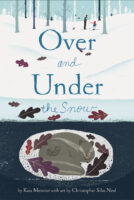When it comes to your students’ reading success, building vocabulary is a critical component. The new words you teach your early readers today not only lay the groundwork for boosting reading comprehension in the future, they also help make reading more accessible and even more enjoyable.
Kim Bollinger, a first-grade teacher in North Dakota, often chooses nonfiction books with strong visual elements to introduce her students to new vocabulary. She then encourages them to use those new words in their writing. “Sometimes my class will write new vocabulary words and main ideas from a book on a sticky note and put on the board,” says Bollinger. “We will classify the Post-Its into different headings and write a report-style piece using new vocabulary words.”
Bollinger loves books from the National Geographic Kids Readers series, which highlight and define new words. One of her favorites is about penguins. “I love the vivid pictures of many different kinds of penguins doing different things,” she says. “There are headings for different main topics about penguins. It makes this book easy to divide up and read parts at a time, which is helpful when working with littles.”
Check out these best-selling books under $5 for grades preK-2.
Another go-to vocabulary-building book for Bollinger is The Way I Feel, which doubles as a great social-emotional learning tool. “It is important for kids to know these words so they can correctly express how they are feeling and deal with their feelings in a positive way,” she says.
When it comes to building her early readers’ vocabulary, Kathy Sahagian, a first-grade teacher in California, favors inspiring books loaded with important vocabulary her students may not have yet encountered in their reading. One of her favorites is The Word Collector, which she says shows her students just how important learning new vocabulary really is.
“I want my students to be word collectors as they read,” says Sahagian. “The way in which they can do this is by making a list of words they do not know. They can use a Post-It note or write new vocabulary words in a journal.”
Shop all top books and series for building vocabulary below. You can find all books and activities at The Teacher Store.



















